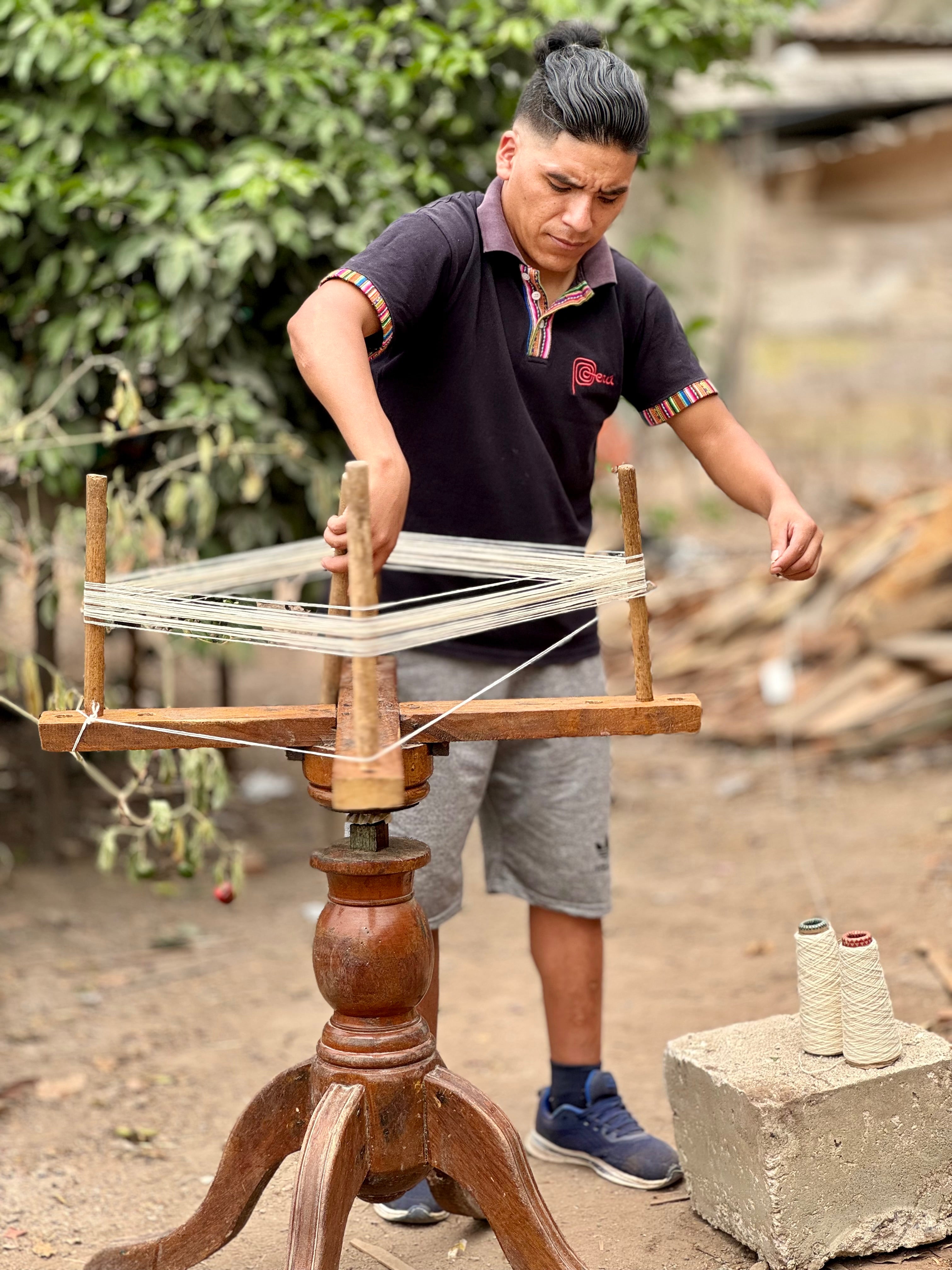Our Process
Collapsible content

1. Sourcing the Wool
We begin by sourcing 100% raw sheep’s wool from artisans in a small village in Puno, Peru. The wool is collected by people who care for and protect the community’s livestock, ensuring high-quality, ethical practices.
2. Preparing the Wool
The fleece is carefully selected, washed, and dried. Then, the fibers are hand-spun using a traditional spindle, known as a Pushka in Quechua, preserving ancient spinning techniques passed down through generations.
3. Natural Dyeing Process
Once spun, the wool is dyed using natural pigments obtained from local plants, flowers, fruits, and even insects. Occasionally, mineral dyes are used to create more intense colors. The use of natural pigments is a key part of our process, ensuring vibrant, lasting colours that are rooted in Peru’s rich heritage.
• Blue: Derived from the tankar fruit, found in Peru highlands during the winter months (March-May).
• Green: Created from the molle plant, which grows year-round in Peru highlands.
• Red, Purple, Fuchsia, Pink: Produced using the cochineal insect, found on cactus plants.
• Yellow: Extracted from the flowers and leaves of the retama plant.
• Brown: Comes from the leaves of the walnut tree.
4. Weaving the Textiles
Finally, our artisans use the pedal loom technique to transform the dyed wool into beautiful, finished pieces. This labor-intensive method, free from modern technology, ensures each piece reflects the skill, patience, and care that has been practiced for centuries.
